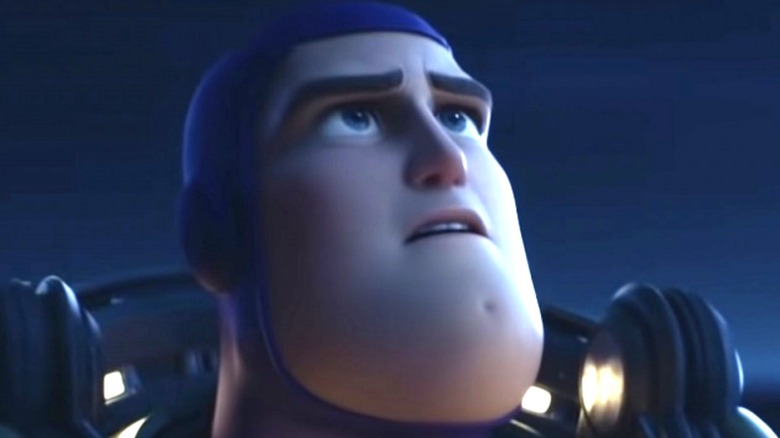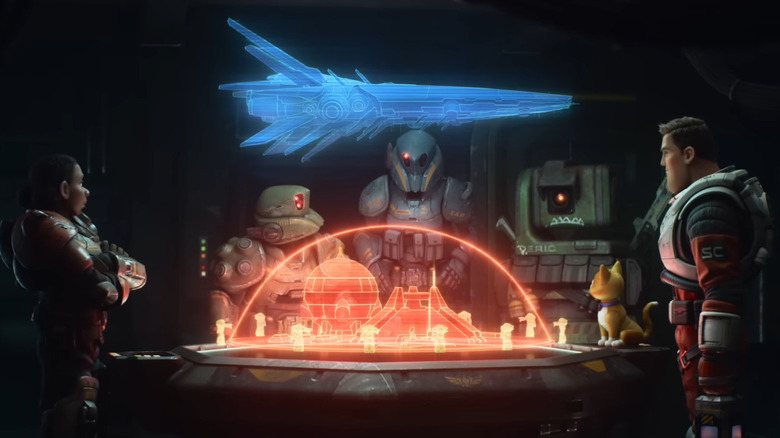How Accurate Is The Science In Lightyear?
Contains spoilers for "Lightyear"
Over the decades, Pixar has gotten to play around with all kinds of genres, from superhero movies with the "Incredibles" films to fantasy with "Brave" to buddy comedies such as "Monsters, Inc." and many more. However, the genre that's yielded some of its best results has been science fiction. The studio's first crack at it was its Oscar-winning masterpiece "Wall-E" in 2008, and now, nearly 15 years later, Pixar is returning to the genre with Angus MacLane's "Lightyear," the movie-within-a-movie that Andy from "Toy Story" watched that made him want to get the Buzz Lightyear action figure.
Although "Lightyear" has a number of influences from several other science fiction films, in tackling its concepts, the film must also ground itself in some kind of reality. Pixar has a history of doing a great deal of research for its movies, from studying underwater life for "Finding Nemo" (via Animation World Network) to taking cooking classes for "Ratatouille" (via RatatouilleMovie) So how does "Lightyear" stack up in its scientific accuracy?
The filmmakers did their research but took one big liberty
The most prominent concept in "Lightyear" is time dilation. Buzz is trying to return his team to Earth after they crash-land on an unknown planet, but to do so, he must achieve hyperspeed. He does several test runs with different fuel combinations but fails every time. And there's a catch — every minute spent in hyperspeed equates to one year on the planet, meaning that Buzz's crew ages significantly by the time he is finally successful.
Time dilation is related to Albert Einstein's theory of special relativity and states that "time moves relative to the observer. ... when an object is moving very fast it experiences time more slowly than when it is at rest" (via Space). So time passes much more slowly for those on the surface of the planet than it does for Buzz while he is in hyperspeed.
"Well, note that the 'sci-fi' is with a small 's' and a big 'F' in this sci-fi universe," said producer Galyn Susman in an interview with the A.V. Club. "But that being said, [NASA has] been extraordinarily helpful." Director Angus MacLane spoke of their collaboration with NASA's Thomas Marshburn, saying, "Of course, we took a lot of liberties ... But there is a lot of truth to it. And [Marshburn] has attempted to explain the science of time dilation to us with a lot of various examples. And we—okay, I—have not really figured it out."
Pixar artists can't be expected to be rocket scientists, and their films will always lean toward what makes for the best dramatic scenarios. But it's also clear that they put mountains of effort into their research that truly takes their films to infinity and beyond.

